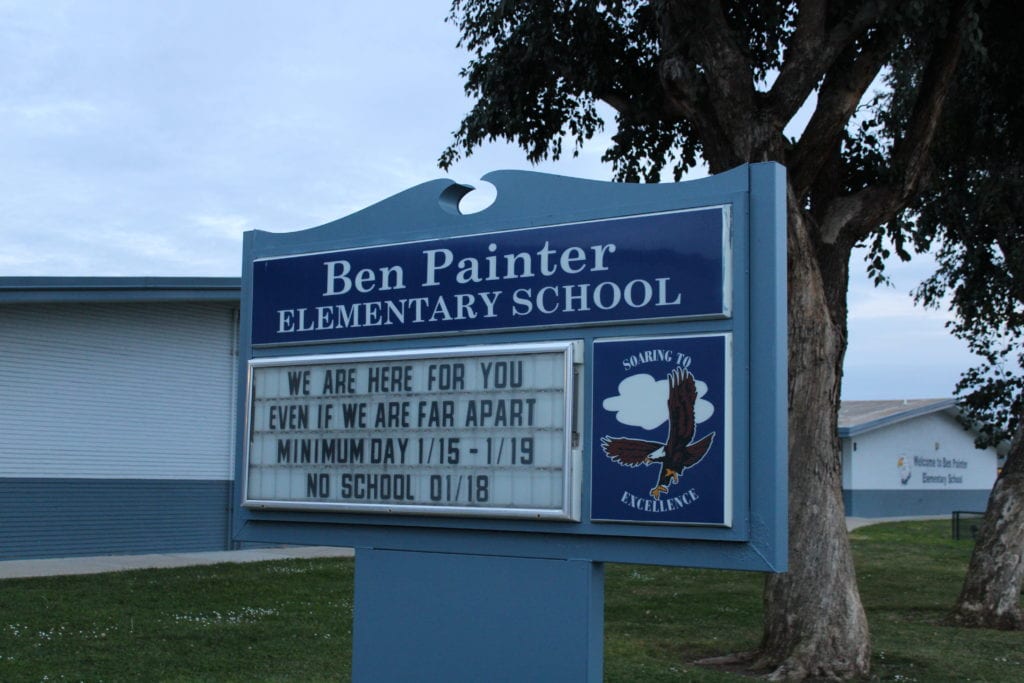Thu-Hong Tran ended a recent Zoom class by asking 14 kindergartners to count to 100 in celebration of 100 days of school. “In Vietnamese please,” she said.
In East San Jose, Ben Painter Elementary is the first school in Alum Rock Union School District to launch a Vietnamese dual immersion program, allowing students to learn both English and Vietnamese as part of their daily curriculum. The program, still in its first year, has two classes and is serving 20 preschool students and 15 kindergartners.
Until recently, California had in place a law that restricted schools from teaching academic subjects in a foreign language unless enough parents signed a waiver to enroll their children in a bilingual program. After voters overwhelmingly approved Proposition 58 and implemented the California Multilingual Education Act in 2016, bilingual education saw renewed enthusiasm.
Since then, school districts across California have received money to expand dual language immersion programs.
In San Jose, Franklin-McKinley School District was the first to launch a Vietnamese bilingual program in 2019 and helped teachers at Painter build their curriculum.
ARUSD offered Vietnamese language classes as an after-school program two decades ago but cut it after two years due to lack of funding, despite a large population of Vietnamese students in the district, teachers said. To maintain the language at home, South Bay families have sent their kids to weekend programs at temples.
When the ARUSD superintendent suggested a Vietnamese bilingual program to Painter Elementary Principal Le Tran in 2016, she jumped at the opportunity. Le Tran had been embarrassed to speak her native language growing up in the U.S., but now she’s taking Vietnamese classes and learning from her colleagues.
“This program is so important,” Le Tran said. “I don’t want Vietnamese kids who are born here to go through the same struggle as I did.”

Le Tran recruited a group of ARUSD teachers, including Qui Pham, who had taught in Vietnam and has a degree in bilingual education, and Thu-Hong Tran, who spent her weekends teaching the language at Duc Vien Temple in San Jose the last two decades. They now lead the two bilingual classes at Painter.
“It has been an amazing experience to be able to fill in the need that the community has,” Qui Pham said. “I’m so excited to get the program started.”
Bridging cultures and connecting families
For Bach Yen Pham, the program has been a “blessing.”
Her 4-year-old son, Kenneth, experienced speech delays as a toddler and didn’t begin speaking until he was nearly two. It’d already been a struggle to coax Kenneth into speaking English, so Bach Yen Pham resigned herself to the fact that her son might not learn his native language until later in life.
Before the program, Kenneth only knew one Vietnamese word: trái bơ, or avocado.
Within weeks of enrolling, he was counting in Vietnamese and singing the Vietnamese alphabet.
“I give all the credit to Ms. Tran,” Bach Yen Pham said. “The program doesn’t only help the kids to maintain the language –– it also helps kids who never got a chance to learn it at a young age.”
A few students in the class speak Spanish or Hindi as their first language, and Bach Yen Pham has noticed that they’ve been catching on quickly as well. Being around other children who are new to Vietnamese, she said, has helped her son feel more comfortable with the challenge of learning a new language.
Sometimes Kenneth breaks out into Vietnamese song at home, and in recent weeks, he’s even learned how to read a few words in the language. But for Bach Yen Pham, the most rewarding moment was when her son said “I love you” in Vietnamese for the first time.
“‘Con thương mẹ.’ I never thought that would happen,” she said, her voice cracking. “That was more than winning the lottery for me.”

Paving a pathway
After a year of planning and building the curriculum with local Vietnamese communities, Thu-Hong Tran and Qui Pham still look for ways to improve the bilingual program.
“There are a lot of resources when it comes to teaching English,” Thu-Hong Tran said. “We don’t have as much in Vietnamese, so we had to figure it out ourselves.”
Principal Le Tran has also been hands-on, helping bridge the technology gap.
Despite challenges that come with distance learning this year, the teachers found ways to implement the immersive experience remotely. To keep her students engaged, Qui Pham added choreography to the Vietnamese songs she teaches, while Thu-Hong Tran texted parents with tips on how to help their kids practice Vietnamese at home.
“It’s not easy,” Le Tran said. “But we found a way to make it work.”
Bach Yen Pham encourages parents who might be unsure about the program to give it a try.
“Kids (who) are growing up here — English is going to be easy and fluent,” she said. “But Vietnamese, our native language, is going to be forgotten if we don’t give them the opportunity to learn.”
Painter Elementary is accepting enrollment for preschool, kindergarten and first grade classes for next year. To learn more about the program call 408-928-8400 or email [email protected].
Correction: An earlier version of this story incorrectly stated the source of funding for bilingual programs. The funding comes from the state budget, not the Global 2030 initiative.
Contact Tran Nguyen at [email protected] or follow @nguyenntrann on Twitter. Contact Sheila Tran at [email protected].



Leave a Reply
You must be logged in to post a comment.